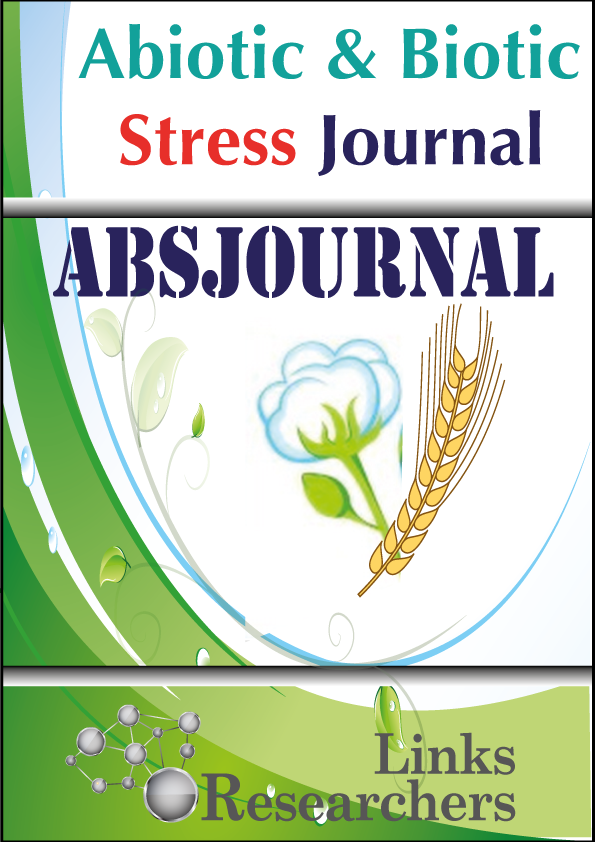Rashid Ahmed Khan* and Muhammed Naveed
Amitava Konar, Kiran A. More and Pradip Mondal
Amitava Konar, S. Paul and Kiran A. More
Dipak Mandal, Paramita Bhowmik and M.L. Chatterjee
Abhijit Ghosal and M. L. Chatterjee
Ashraf Khan1*, Suliman Shah2, Maid Zaman3 and Komal Habib2
Inzimamul Haq1*, Shahid Sattar1, Bashir Ahmed1, Qamar Zeb2 and Amjad Usman3
Mahnoor Pervez and Farkhanda Manzoor*
Hamza Rehman*, Nida Ahmad Khan, Asad Ali, Warda Batool and Kanwal Razzaq
Rahat Afza, Muhammad Asam Riaz*, Muhammad Afzal and Muhammad Zeeshan Majeed
Muhammad Irfan Ullah1*, Muhammad Arshad1, Abu Bakar Muhammad Raza1, Nimra Altaf1, Muhammad Afzal2
Kirshan Chand1, Fahad Nazir Khoso1*, Arfan Ahmed Gilal1, Abdul Mubeen Lodhi2, Agha Mushtaque Ahmed1, Ghulam Murtaza Jamro3, Sohail Ahmed Otho1 and Jamal-U-Din Hajano4
Muhammad Zeeshan Majeed1*, Muhammad Irfan Ullah1, Dilbar Hussain2, Muhammad Luqman3, Muhammad Qasim1, Gulfam Yousaf1, Hamza Latif1 and Muhammad Zeeshan1
Ahmad-Ur-Rahman Saljoqi1, Sumayya Amin1, Muhammad Salim1*, Taufiq Nawaz2 and Farida Anjum3
Tiyyabah Khan1, Hafiz Azhar Ali Khan1*, Muhammad Rizwan Khan1, Muhammad Umer1, Adnan Akhter1 and Waseem Akram2
Ghulam Murtaza1,6*, Muhammad Irfan Fareed2, Noshaba Munawar3, Muhammad Nadeem Khan4, Gul-E- Zahra5, Taskeen Ahmad6, Muhammad Daud6 and Taqi Raza6
Harpreet Kaur* and S.S. Hundal
Sehrish Akram1, Abida Butt1* and Shakil Ahmad Khan2
Usama Saleem1, Muhammad Asrar1*, Dilbar Hussain2, Saddam Hussain1, Abdul Ghaffar2, Hassan Usman1, Muhammad Imran1, Mubshar Saleem3 and Maryam Hamid1
Iftikhar Ahmad1, Tahir Saeed1, Umair Faheem2*, Qaisar Abbas2, Muhammad Saleem Akhtar Khan3, Mussurrat Hussain2, Tanveer Ahmad4, Gulzar Akhtar4, Asifa Hameed5, Muhammad Hasnain6 and Muhammad Jamil7
M. Tariq Mushtaq1, Faisal Manzoor1, M. Ishtiaq1*, Mirza Abdul Qayyum1, Muqarrab Ali2, M. Akram3, M. Rafiq Shahid3 and Saleem Riaz1
Muhammad Nadeem1, Jamshaid Iqbal2, Muneer Abbas1*, Niaz Hussain1, Muhammad Tariq Javeed1, Abdul Ghaffar1, Muhammad Irshad1, Muhammad Aslam1, Gul Rehman2 and Shahar Yar Ahsan1
Muhammad Ihsan Ullah2, Muhammad Hasnain1*, Muhmmad Luqman2, Hammad Hussnain2, Muhammad Tauseef2, Abrar Ahmad2, Muhammad Shahid2, Qaisar Abbas3, Mussurrat Hussain3, Ali Raza2, Muhammad Musadique Ahmad Khan4, Muhammad Kashif Nadeem5, Sajid Nadeem6
Featuring
-
Cytochrome-P450 (CYP11B1 Gene) Polymorphism and its Role in Bovine Milk Producing Traits
Faheen Riaz, Sarfraz Mehmmod, Aatka Jamil, Khansa Jamil, Imran Riaz Malik, Muhammad Naeem Riaz and Ghulam Muhammad Ali
Sarhad Journal of Agriculture, Vol.40, Iss. 4, Pages 1522-1532
-
Assessment of Oxidative Stress Biomarkers and DNA Damage Among Pesticide Retailers in South Punjab, Pakistan
Abdul Ghaffar, Maria Niaz, Ghulam Abbas, Riaz Hussain, Fozia Afzal, Habiba Jamil, Ahrar Khan, Rabia Tahir, Muhammad Ahmad Chishti, Shahnaz Rashid, Shahzad Ali Gill, Aliya Noreen, Ayesha Maqsood and Kashfa Akram
Sarhad Journal of Agriculture, Vol.40, Iss. 4, Pages 1509-1521
-
Investigations on the Feeding and Spawning in Bagarius bagarius from Manchar Lake District Jamshoro, Pakistan
Bushra Shaikh, Naeem Tariq Narejo, Faheem Saddar, Muhammad Hanif Chandio, Majida Parveen Narejo, Urooj Imtiaz, Athar Mustafa Laghari, Ghulam Abbas and Shahnaz Rashid
Sarhad Journal of Agriculture, Vol.40, Iss. 4, Pages 1501-1508
-
Milk Quality Improvement Program for Small-Scale Dairy Farmers in Angochagua, Ecuador
Elena Balarezo, Jose Luis Flores and Miguel Angel Toro-Jarrin
Sarhad Journal of Agriculture, Vol.40, Iss. 4, Pages 1491-1500
Subscribe Today
Receive free updates on new articles, opportunities and benefits

© 2024 ResearchersLinks. All rights Reserved. ResearchersLinks is a member of CrossRef, CrossMark, iThenticate.








